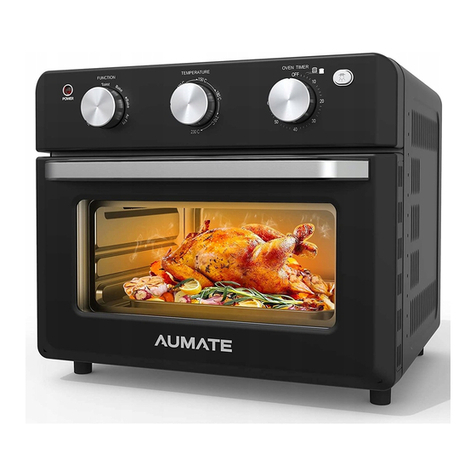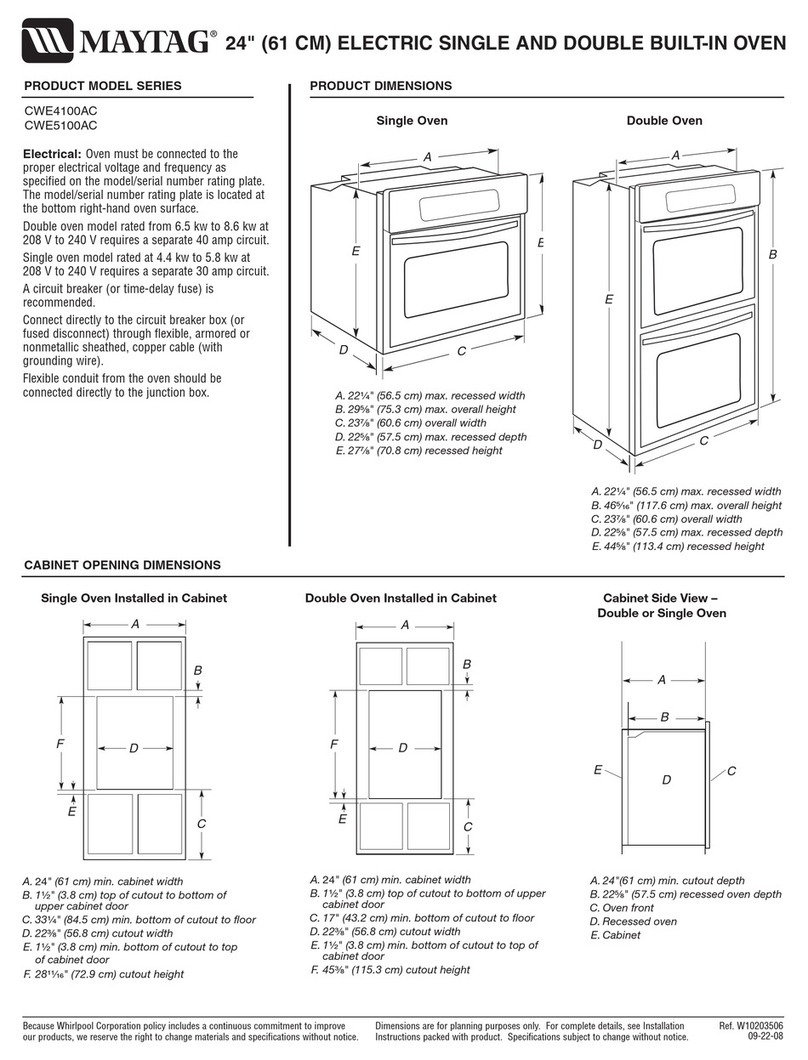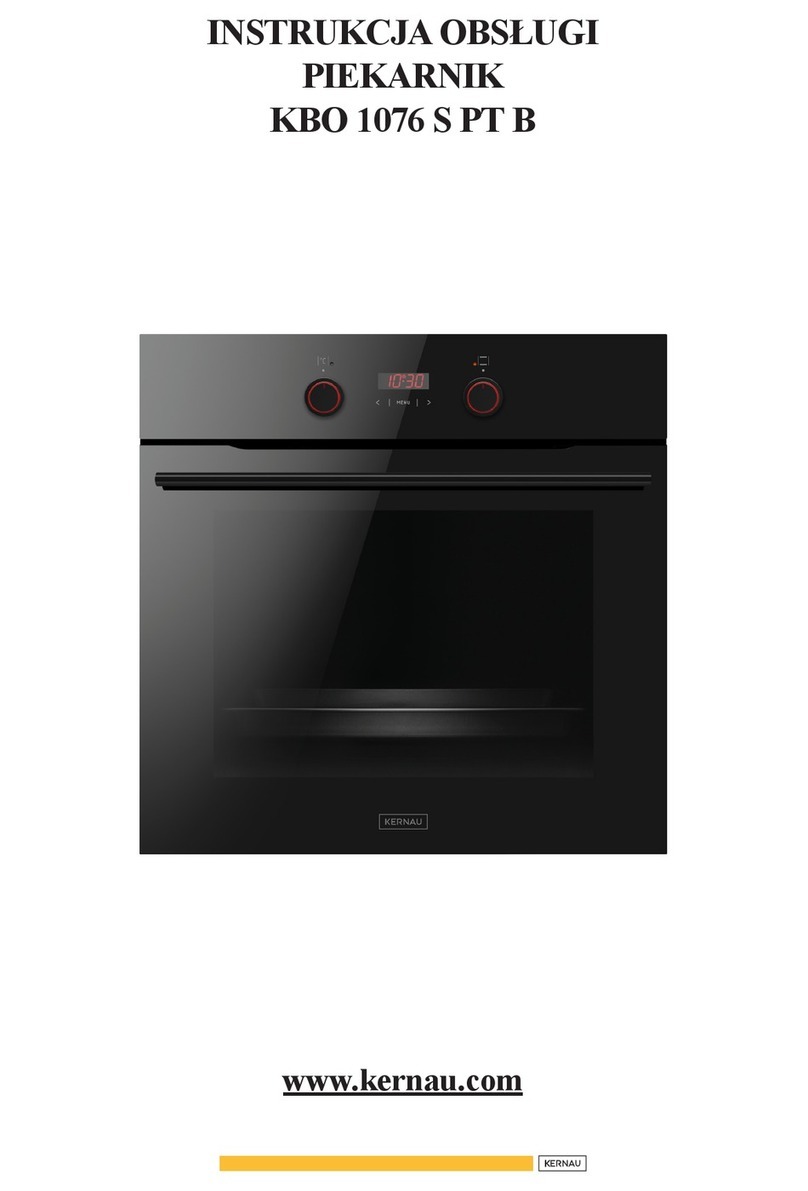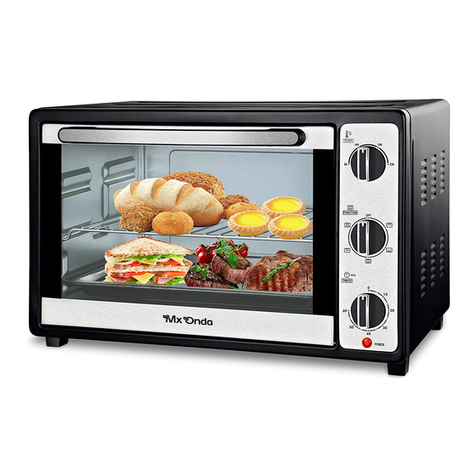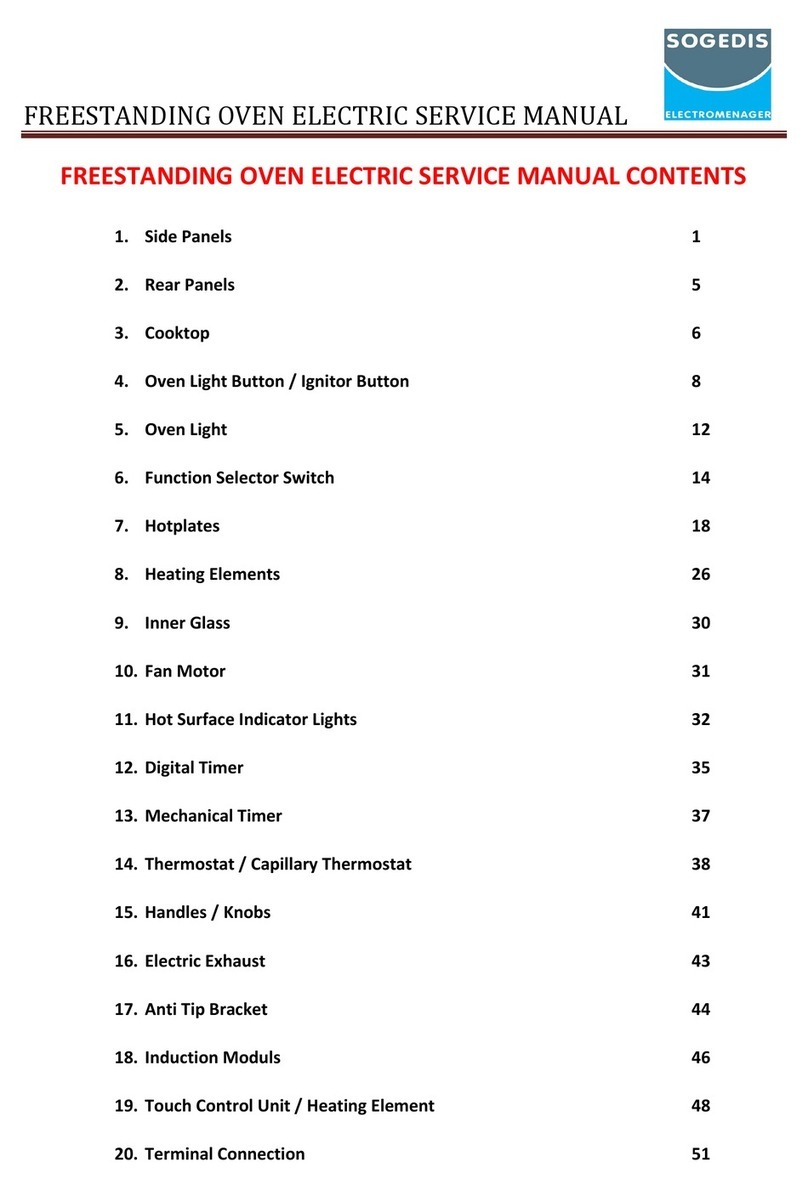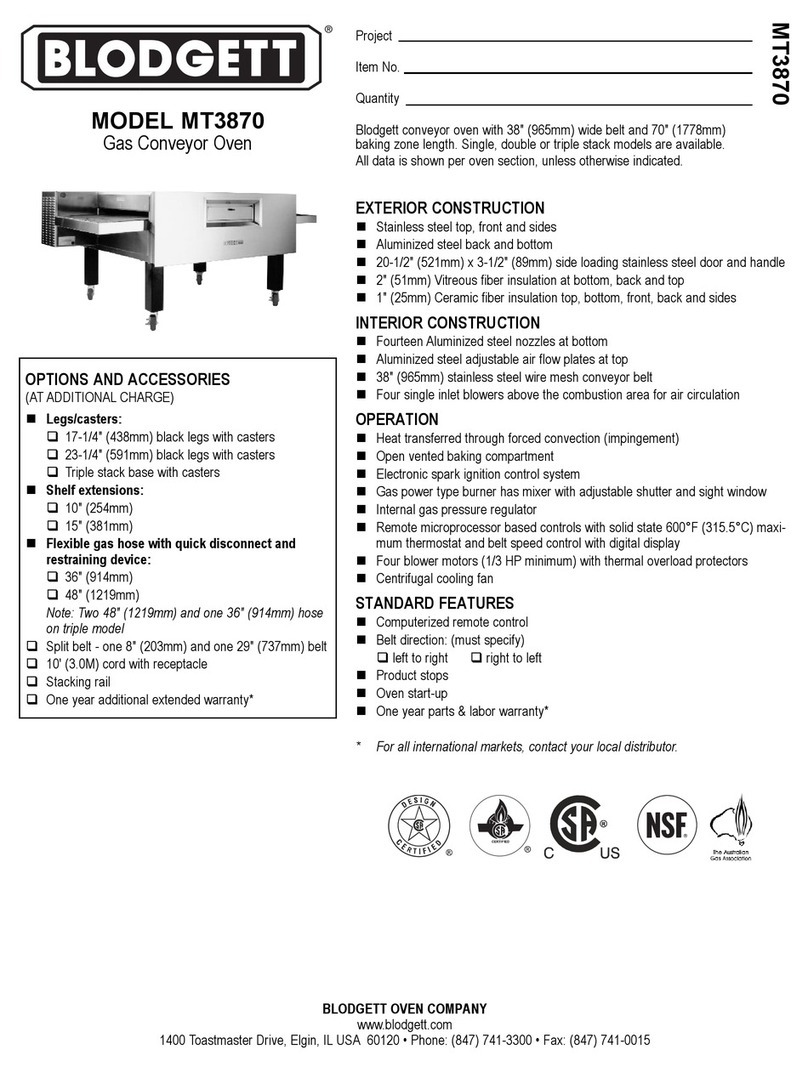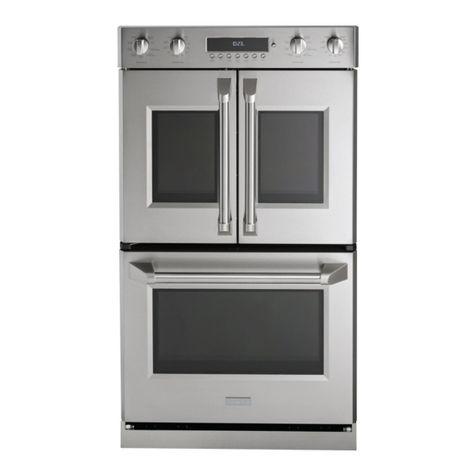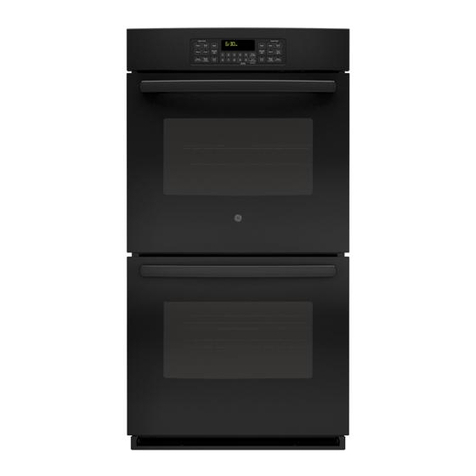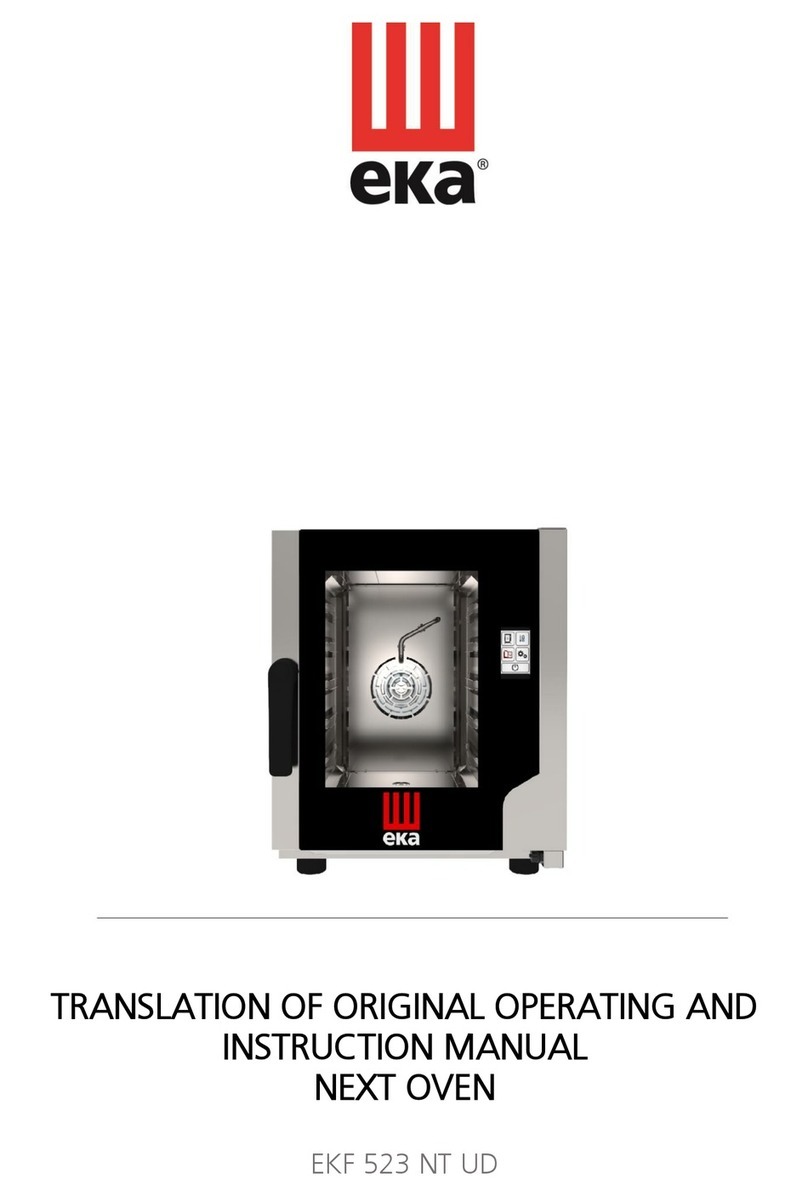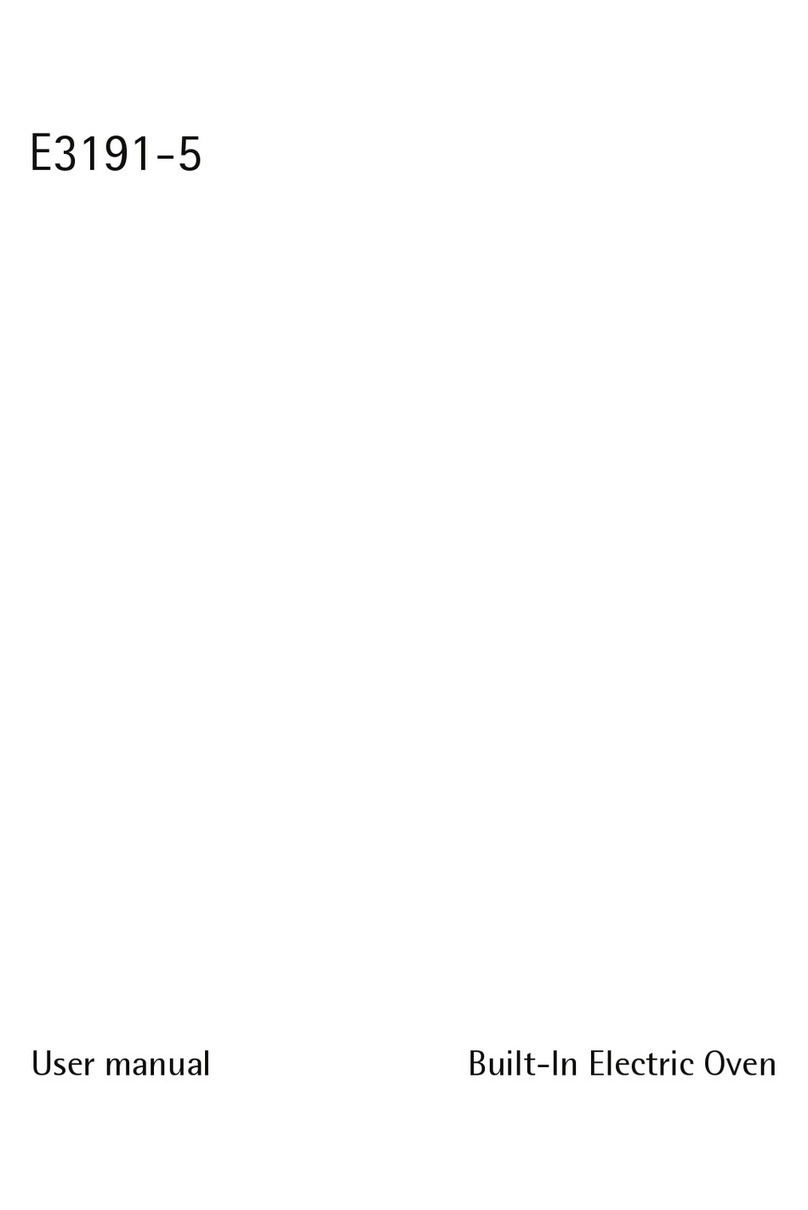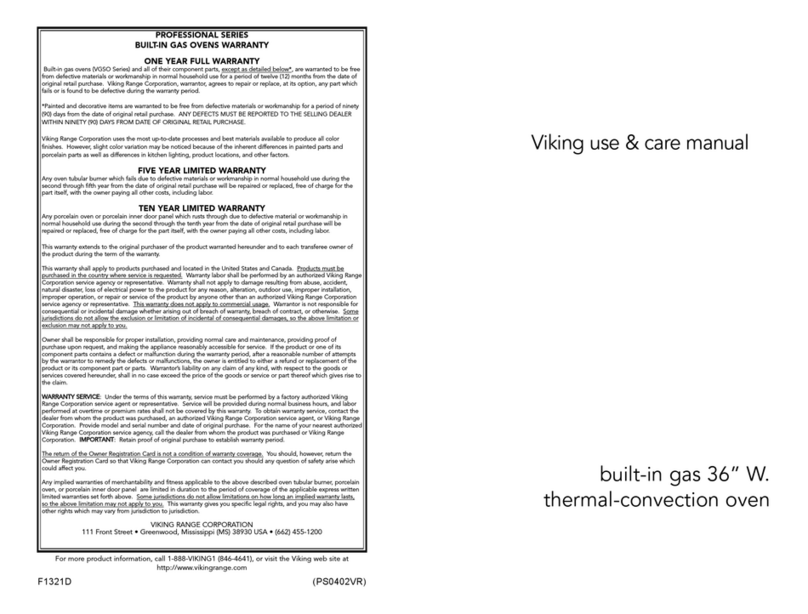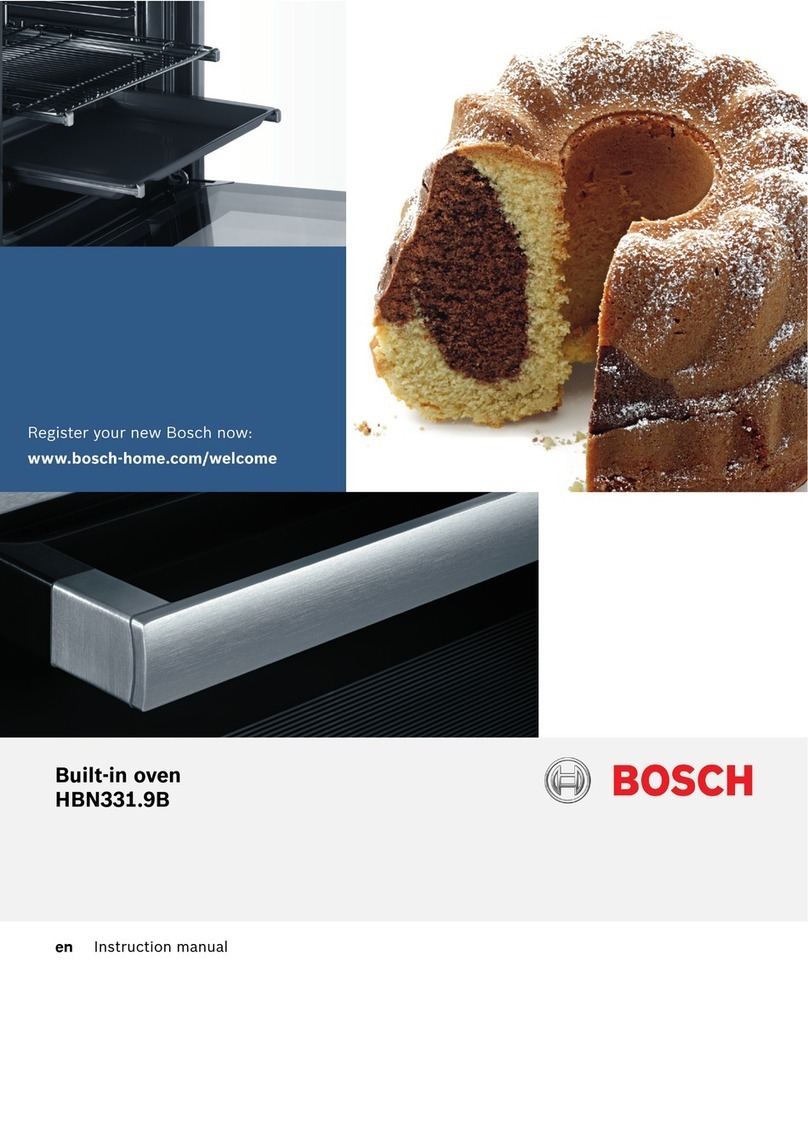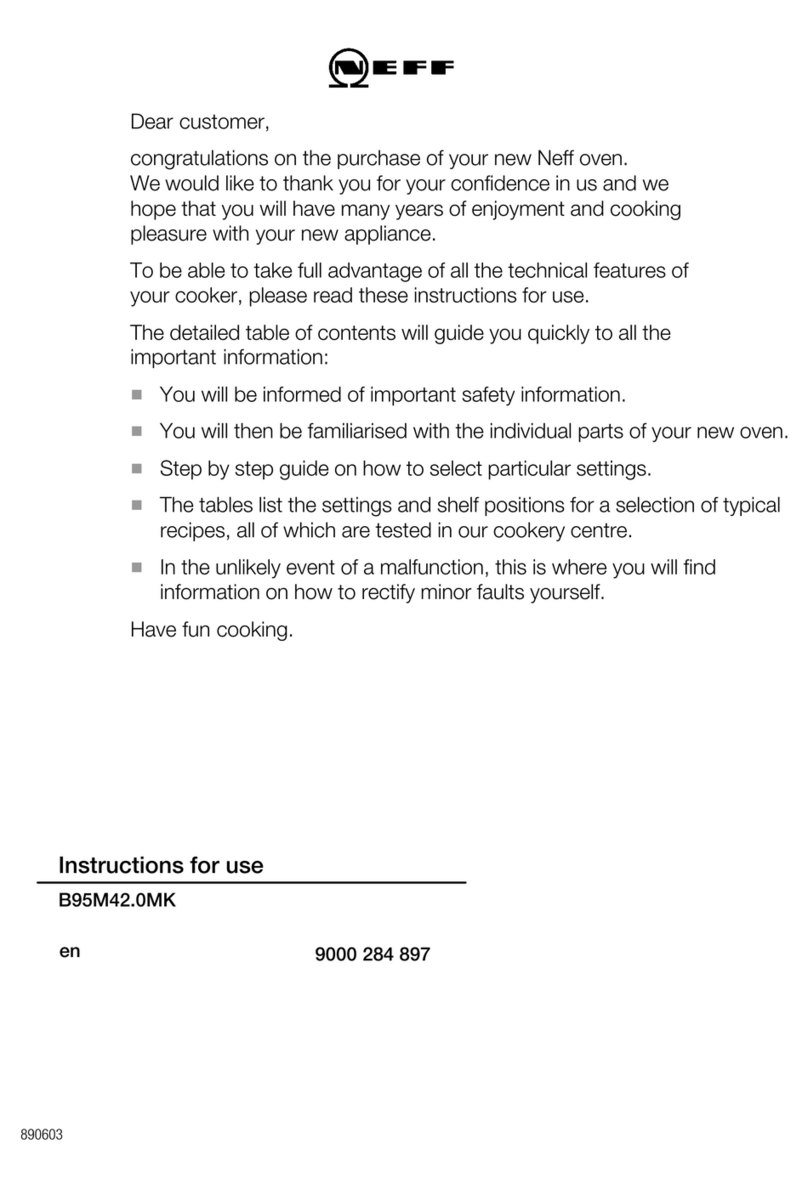
VACUUM OPERATION
IT IS IMPORTANT TO USE VACUUM TUBING FOR ALL
VACUUM HOOKUPS. OTHER TYPES OF TUBING MAY
COLLAPSEANDPREVENT COMPLETE EVACUATION.
6.2
A pump with a pumping capacity four times greater than the chamber
volume is advisable. For example a 1410 has a chamber volume of one
(1) cubic foot so a pump with a pumping with a pumping capacity of
four (4) cubic feet per minute is recommended. When working below
1mm, a diffusion type pump will be needed. See unit specifications
for chamber capacities.
6.3
Vacuum : To apply vacuum to the chamber attach the hose from the
vacuum pump to the larger 3/8” hose connection on top of the oven.
Close the VENT valve and open the VACUUM valve. Latch the door
shut and start the vacuum pump. Be certain the vacuum valve is open
and the VENT valve is closed. This action will hold the door shut and
against the gasket until the pump creates a vacuum in the chamber.
Once a good vacuum seal is accomplished, the door will hold itself
shut and sealed until the chamber is returned to atmospheric pressure.
6.4
Watch the VACUUM GAUGE and when the required vacuum is
obtained, close the VACUUM valve and turn the pump off. The
VACUUM GAUGE is calibrated from zero to 30 inches of Hg
(762mm of Hg) with zero representing atmospheric pressure. The
oven can be evacuated to pressures as low as 10 microns.
6.5
Vacuum Release : To return the chamber to atmospheric pressure,
open the VENT valve very slowly and allow the chamber to re-
pressurize. The speed of pressurizing can be controlled by how much
the valve is opened.

